College Admissions
College Admissions
Preparing for College
The Best College for You
What to Study
Applications
Education Options
Education Options
Private Universities
Public & State Universities
Community Colleges
Scholarships
Scholarships
African American Scholarships
Latino Scholarships
Native American Scholarships
Women Scholarships
College Grants
College Grants
Federal Grants
Merit Based Grants
Need Based Grants
Student Loans
Student Loans
Federal Student Loans
State Student Loans
No Co-signer Student Loans
Bad Credit Loans
Student Loan Consolidation
College Survival
College Survival
Financial Aid Tips
The Digital Student Blog
Many people seem to believe that college is just an extension of high school. Actually, nothing could be further from the truth.
In fact, we would insist that college ain’t nothin’ like high school.
There is so much wrong with college athletics that it can be difficult to focus on any one issue. But it is easy to see that those in charge have time and time again sold their souls.
So it is not surprising that the recent BCS Championship game took place on January 10th, a full 37 days after the completion of the college football season. Playing the game at such a late date is a function only of the dollars created – it is certainly not done with any consideration of the young men playing the game, the ones that the National Collegiate Athletic Association wants us to call student athletes.
 Instead, there ought to be another term, something along the line of “scholarship athletes.” Because, quite frankly there is very little about big time, male college sports that is about students.
Instead, there ought to be another term, something along the line of “scholarship athletes.” Because, quite frankly there is very little about big time, male college sports that is about students.
But I cannot find fault with the athletes themselves, so young and easily led that the vast majority actually think that if the cards fall right, they will one day make it to the NFL or the NBA. No, the fault lies with the adults and the guidelines set forth by the NCAA, an organization that has earned its blogosphere nickname, the “No Credibility Athletic Association.”
Yes, there is so much wrong that I am seldom surprised when I see yet another example of hypocrisy. But it did happen this past week when I had the good fortune to read a recent Gregg Doyel column at CBSSports.com.
The situation involves Rob Bolden, a freshman quarterback at Penn State who became the first true freshman QB in nearly a century to start a game for the storied Nittany Lions. To get the full detail, you can head over to Doyel’s column but it is yet another tale of how college athletics makes so little sense.
In a nutshell, after a concussion during the seventh game of the season, Bolden found himself on the bench. As the season worked its way towards its January conclusion, it became apparent to Bolden that he was not destined to get off the bench.
Accordingly, the youngster asked for a release from his scholarship so that he could transfer to another school. But in a sign of just how wrong the entire college-athletics process is, the coaching staff at Penn State can actually veto such a request.
And according to Doyel, the staff did say no.
The result? Without Penn State signing off, Bolden’s only scholarship for 2011-2012 can come from Penn State. Even though many other schools would happily grant him one (he was offered scholarships at multiple schools initially), they cannot without the release. Therefore, to transfer, Bolden must find the money to pay his own way into another college. In a nutshell, under current NCAA rules this young man is the property of the Penn State football program.
To show the blatant hypocrisy, Doyel goes on to remind us of the situation involving the recent signing of former University of Connecticut coach Randy Edsall by the Maryland Terrapins. According to Doyel, Edsall was in talks with the Maryland administration about his new job even as he was first preparing and then actually coaching his team in the biggest bowl game in UConn history. Not only had Edsall apparently agreed to a deal, instead of returning home on the plane with his team flew instead to Maryland where he accepted the new coaching position.
So here again is why people call the NCAA the “No Credibility Athletic Association.”
Edsall “got an enormous raise and can coach at Maryland right away in 2011,” notes Doyel. “But if Rob Bolden transfers to Maryland, he’d have to sit out the 2011 season — and pay his own way as a student.”
Is it not any wonder that we have people actually stating that it is time to pay college athletes. That suggestion belongs right up there with the idea that colleges should construct majors so that these individuals can actually major in football or basketball.
Yes, there is so much wrong with college athletics it is difficult to know where to start. But seemingly every day we hear tell of another tale where the only thing that matters is money and yet another situation where the word student is simply removed from the term student-athlete.
By now, you have no doubt heard the story of Karen F. Owen. Actually, you may not be familiar with the name but we would guess you know her story.
Owen is the 2010 graduate of Duke University who composed the now world famous risqué PowerPoint, “An Education Beyond the Classroom: Excelling in the Realm of Horizontal Academics.” We will not include a link to her presentation as we are certain savvy readers will know how to find it if they are not familiar with the young lady’s story.
But we will share it in capsule form as a teaching tool for unsuspecting college students. In her document, formulated to look like a thesis presentation, Owen not only describes the men she’s had sexual encounters with; she also provides charts ranking their sexual prowess.
The PowerPoint is extremely detailed and includes specific criteria that identifies the young men she assesses. And by identification, we mean the basics, names and photos.
But most importantly to all at the moment, the thesis has gone viral – like any disease it is spreading across the Internet to every corner of the globe.
For Once, Facebook not the Culprit
 It is important to note a couple of basics here. Ms. Owen did not make the mistake of placing this presentation on her Facebook page or other social networking site where it would get shared instantly.
It is important to note a couple of basics here. Ms. Owen did not make the mistake of placing this presentation on her Facebook page or other social networking site where it would get shared instantly.
No, according to the details of the story, Ms. Owen sent the PowerPoint to three of her girlfriends. How close a friend each was, we are not sure but one demonstrated behavior that is typical of most people who receive titillating emails.
Yes, one girlfriend forwarded it.
And one by one, members of the voyeuristic society that loves reality television and fawns over the tales associated with the likes of Lindsay Lohan and Paris Hilton, decided it would be cool to forward it as well.
Meaning that it is now not only all over the subterranean Internet, unscrupulous bloggers looking to build those page counts have posted it on their sites for everyone to read. Some have decided that perhaps the mens’ names and photos were an invasion of their privacy, even if the young lady in question was the architect of their invasion, and redacted defining details.
Others have not. And even those that have, well they continue to display the salacious details for the public to see.
Debate about Empowerment?
Amazingly, despite the shameful behavior of everyone involved, there are web sites associating her document with the women’s movement. Though Owen appears to be regretful and ashamed to the point that she has gone into hiding (pulling all her social network profiles), some folks are calling her actions self-empowerment.
These discussions seem to focus on the guys do this kind of stuff to girls all the time (do they really?) so it’s about time they got their due. Funny thing is, if that were the case, one would think Ms. Owen would have done anything but gone into Internet hiding.
Clearly, for her it was not about empowerment at all.
Instead, it was about poor judgment; creating a document that reveals personal details about her and the men she encountered represents extremely poor judgment. And then there was the other decision, that one other last step – the urge to share said document with others.
We have noted several times that one should never put any detailed information on a Facebook page for fear of what it might do to one’s future. We would of course now add, don’t ever email personal details to one of the people you deem a trusted friend either.
Said trusted friend may or may not be really a friend. Then again, they may actually be a friend who happens to be someone much like the creator of the PowerPoint; someone devoid of judgment.
A Teachable Moment
We can’t help but feel bad for Duke University, the young men portrayed, the parents of young Ms. Owens and of course the infamous creator of the PowerPoint herself. There is a great deal of sadness to go around.
The lesson here is obvious. It is imperative that every young person understands, male or female, that the Internet age demands careful consideration regarding the placement of private details about you and/or others into any document form, but especially digital forms.
If you don’t, then you too could be as well known as Ms. Owens, for all the wrong reasons.
How many times have you tried, unsuccessfully, to explain your feelings to adults?
That you love the competition and the socialization that video games provide. That you simply enjoy trying to figure the game out.
As for the violent games, well, they add that one additional level, providing action and a rush of adrenalin that mirrors what you feel when competing on a field or in the gym.
 Most importantly, they help you cope with anger and stress. After a particularly difficult day or week, there is nothing like immersing oneself in a violent video game. I mean, where else can you take out your anger in such an innocent way?
Most importantly, they help you cope with anger and stress. After a particularly difficult day or week, there is nothing like immersing oneself in a violent video game. I mean, where else can you take out your anger in such an innocent way?
That explanation is particularly difficult with mom who can understand the competition and thus is willing to accept games like Pac Man or Madden football. But for the life of her, she simply cannot understand your enjoyment with a game like Grand Theft Auto?
Support for Violent Video Games
Well, for those who have tried to somehow explain, you can now point the skeptics to yet another study that indicates that concerns with violent video games is over blown. That in fact, researchers presenting at the New York University ‘Games for Learning’ symposium, have reached the conclusion that even violent video games can be utilized as learning tools.
Consider first that Sigmund Tobias of the State University of New York at Albany noted that an “Israeli air force study found that students who played the game Space Fortress had better rankings in their pilot training than students who did not.”
Even better, consider what Daphne Bavelier, an assistant professor in the department of brain and cognitive science at the University of Rochester who has focused her research on games like Unreal Tournament and Medal of Honor, had to say about fast-paced shooter games:
 “People that play these fast-paced games have better vision, better attention, and better cognition,” she stated. She went on to suggest that such games could well improve math performance and other brain tasks as well.
“People that play these fast-paced games have better vision, better attention, and better cognition,” she stated. She went on to suggest that such games could well improve math performance and other brain tasks as well.
“We are testing this hypothesis that when you play an action video game, what you do is you learn to better allocate your resources,” she offered. “In a sense you learn to learn. … You become very good at adapting to whatever is asked of you.”
Just Having Fun
Of course, none of these has any ultimate implication for why it is that you play. As we said, for most of us, it is all about the competition, the challenge, and the chance to put day to day struggles aside for a period of time.
You couldn’t care less as to whether your peripheral vision has been enhanced or that these games test your ability to detect small activities on the screen. In reality, for you it is nothing more than simply having fun.
But it is nice to see that some folks have begun to question the typical reaction, that because many adults cannot understand the attraction of such games, they immediately insist that the games cannot be good for us. More to the point it is nice to see that a professor like Bavelier could actually suggest that first-person shooter games “eventually will become part of school curricula” even if “it’s going to take a generation” to accept such findings.
Unrealistic to Expect Understanding
OK, it is probably wishful thinking on our part that you might be able to completely change your parents mind. Pointing them in the direction of other studies could even work against you in the long run.
But at least it is reinforcing to read that college professors actually are beginning to understand that you and your buddies love for a little video warfare is not a sign of sickness, that you can enjoy the video games that feature violence without becoming a menace to society.
Medal of Honor anyone?
Cell phones and sex don’t mix – and we are not talking about sexting.
One really good thing about surfing the internet, I am usually sitting down when I click on that story of stories – the one that makes me sit up very straight and utter, are you kidding me? Of course, it is usually the s word I utter but you get the point.
The other day I am surfing Arianna’s wondrous site, The Huffington Post, to see which writer is taking that raving maniac Glen Beck to task today when I stumble on to the latest study, this one about cell phone use and texting.
In the realm of you have to be kidding, consider these results:
“Twenty-four percent of users under 25 and 12 percent of users over 25 allow electronic message to interrupt them while they’re in the bathroom.”
Even while on the hopper? Is nothing sacred?
And then this:
 “…over 40% of respondents saying they didn’t mind being interrupted for a message. In fact, 32% said a meal was not off limits while 7% said they’d even check out a message during an intimate moment.”
“…over 40% of respondents saying they didn’t mind being interrupted for a message. In fact, 32% said a meal was not off limits while 7% said they’d even check out a message during an intimate moment.”
And, what mind you, constitutes an intimate moment? I guess just what you might think:
“The study found that 11 percent admit to checking updates during sex (6 percent of users over 25 do the same).
“While the scope of this study is fairly limited, the results seem to echo recent findings that estimated 15 percent of Americans have interrupted sex to answer a cell phone call.”
No, nothing appears sacred anymore.
Now I stumbled onto this amazing set of revelations just after catching one of those moments we could dub a fabulous reality, the amazing photo of Tiger Woods tapping away on his cell phone while playing a practice round at the Masters. The amazing moment that will form the perfect photo over at TMZ whenever some other young lady feels the need to come clean and admit she has spent time with Tiger also led to a number of double entendre’s since reportedly Woods was filming his friend Mark O’Meara’s, ahem, putting stroke.
For the cell phone, etiquette-challenged young, we remind you of some of the basics:
Lights Out, Phone Off: Now this usually means that phones should be turned off in movie theaters, playhouses, and other stage venues. The ringer and the lighted screen both deemed as negatives in such a setting. Could it be that the 11 percenters never turn off the lights?
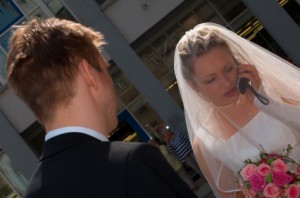 Love the One You’re With: This usually translates to the notion that it is rude to take a cell phone call during a social engagement. Even more pertinent, it is deemed inconsiderate to take a call in the middle of a conversation. If by the slimmest of chances you truly think you must answer, you are supposed to ask permission to do so. Could it be that those who check updates during sex see the act as so distant it does not qualify as either a social engagement or a conversation? And what possibly could your significant other say when you ask, “Mind if take this call?”
Love the One You’re With: This usually translates to the notion that it is rude to take a cell phone call during a social engagement. Even more pertinent, it is deemed inconsiderate to take a call in the middle of a conversation. If by the slimmest of chances you truly think you must answer, you are supposed to ask permission to do so. Could it be that those who check updates during sex see the act as so distant it does not qualify as either a social engagement or a conversation? And what possibly could your significant other say when you ask, “Mind if take this call?”
Use Common Sense: This often translates to turning your phone off before a job interview, your best friend’s wedding or Grampa’s funeral. If the phone should be off anyplace a quiet atmosphere is expected, then why in heaven’s name would it be on in the bedroom?
Employ the Ten Foot Rule: The theory is you should maintain a distance of at least 10-feet from the nearest person when talking on a cell phone. Tough to maintain this standard even in a king size bed.
Times have surely changed. Whereas once upon a time the gentleman held the car door for the lady, today he is just as likely to be the passenger in her car.
Today’s digital world no doubt presents new challenges when it comes to manners and etiquette. That said remember the basics:
Lights Out, Phone Off – Love the One You’re With – Use Common Sense – Employ the Ten Foot Rule.
And then add this one other:
Keep the Personal Personal: on and off the phone.
There is a great deal of hope among college basketball fanatics for a KU vs. UK NCAA Final in 2010. For those not in the know, KU is Kansas University, the number one overall seed in the tournament. UK is the University of Kentucky, the team with the best overall player in freshman John Wall.
But I for one am hoping for a different result. I am hoping that Kentucky gets banished quickly for more reasons than the man who was hired to coach the team.
 Each year, Derrick Z. Jackson, an African-American editorial writer for the Boston Globe, takes the time to scrub the NCAA graduation data. He is not easily fooled by the likes of the National Collegiate Athletic Association interim president Jim Isch who earlier this year implied that the NCAA emphasis on academics had helped raise the overall graduation rate for college basketball nearly 10 percentage points over the last eight years.
Each year, Derrick Z. Jackson, an African-American editorial writer for the Boston Globe, takes the time to scrub the NCAA graduation data. He is not easily fooled by the likes of the National Collegiate Athletic Association interim president Jim Isch who earlier this year implied that the NCAA emphasis on academics had helped raise the overall graduation rate for college basketball nearly 10 percentage points over the last eight years.
Those rooting for a Kansas-Kentucky final should look at some of the data Jackson has uncovered. First off, he notes that Kentucky cannot really boast of academics at all, not with a basketball Graduation Success Rate of just 18 percent for its black athletes. And not when its GSR for basketball is but 31 percent overall.
In fact, Jackson did some extensive digging and found that Kentucky’s graduation rate for its black players over the last six years tops out at 18%. The five other years the school posted black graduation rates of 17, 9, 17, 17, and zero. And just to clarify that he is not cherry picking, going back ten years the black player graduation rate has never risen above 29 percent.
It is important to recognize that these rates do not reflect the all-too-often explanation offered by sports junkies – that these top programs post poor rates simply because their athletes leave early for pro basketball. The fact is, the NCAA adjusts these graduation-rate reports for those players leaving a school, for pro basketball or for another school, as long as those athletes were in good academic standing at the time they made the move.
So you will not find me rooting for Kentucky to make it to the finals. Especially not with a coach who has twice left programs that have had their accomplishments rescinded because of rule infractions.
In addition, I no longer can root for Duke, a school that does graduate its players yet accepts athletes to fill out its athletic rosters that do not have the requisite SAT scores or academic qualifications that non-athletes must have to be accepted at the school.  If you care about the idea that the NCAA tournament is supposed to involve amateurs enrolled in a college, then you will not root for Maryland (a zero black graduation rate the past three years and 8 percent currently overall), Texas (black graduation rates the past three years of 29, 14 and 22 percent), Nevada Las Vegas (black player grad rates of 13, 10, 10, 14, and 17 percent the last five years), or the University of California at Berkeley (a GSR for both its black and white players of zero – as opposed to the overall campus graduation rate of 85 percent (62 percent for black students). Other teams that stretch the term student-athlete beyond recognition are New Mexico State, Washington, Missouri, Arkansas-Pine Bluff, and Baylor.
If you care about the idea that the NCAA tournament is supposed to involve amateurs enrolled in a college, then you will not root for Maryland (a zero black graduation rate the past three years and 8 percent currently overall), Texas (black graduation rates the past three years of 29, 14 and 22 percent), Nevada Las Vegas (black player grad rates of 13, 10, 10, 14, and 17 percent the last five years), or the University of California at Berkeley (a GSR for both its black and white players of zero – as opposed to the overall campus graduation rate of 85 percent (62 percent for black students). Other teams that stretch the term student-athlete beyond recognition are New Mexico State, Washington, Missouri, Arkansas-Pine Bluff, and Baylor.
Instead, you could do as I and pull for the teams that play high caliber ball and play it with student-athletes. Try anyone of the following, all posting grad rates of 90% or more: Brigham Young, Notre Dame, Utah State, Wake Forest, Wofford, Lehigh, Vermont and Villanova.
I guess, of the top four seeds I could live with Kansas, a respectable 73% GSR, or Duke, graduating the folks it accepts with a GSR of 92%, making it to the finals. But while Kentucky is abysmal, the final top four selection, Syracuse, is no shining star either with a GSR of 50%.
Imagine a day when the NCAA would put its reputation in front of dollars and cents and actually insist on some minimum graduation standards for those teams accepted to the Big Dance.
Marketing is critical to any business. Colleges and universities are no different.
Each year we are witness to some interesting efforts. For example, last year we were exposed to Harvard by the Numbers:
But in today’s YouTube, mash up world, such marketing videos are ripe
for alteration. No sooner had we been exposed to Harvard by the Numbers, we got this superb parody:
Now comes the latest from the talented students at Yale University. For a generation smitten by the likes of High School Musical and Glee, it may well be the perfect marketing tool:
While we await the parody that will certainly be forthcoming (though we doubt it will attempt to match the length), it is interesting to see the current reactions making their way around the web.
For many current Yalies, it is, well ‘cringeworthy’.
“Next year’s class is going to be devoid of any serious academic talent,” offers ugh. “What a huge sap on our prestige.”
“This is so embarrassing,” adds whoa while another commenter called Crimson went on to suggest, “This is the best recruiting ploy Harvard ever came up with!”
It gets no better among the college elite. In “That’s Why I Chose” to Ram a Soldering Iron Into My Ears, Bobby Fineman of Ivygate lets loose:
“Oh. my. god. Yale has released a new admissions video called “Why I Chose Yale,” and it is bananas! Rotting, blighted bananas made of earnest on-key singing and poop.”
Ouch.
Zachary Warma at Stanford calls his piece, Hell Hath No Fury Like That of a 16.5-Minute Yale Admissions YouTube Music Video:
“Yale Admissions Office put together what can only be called one of the single greatest abominations ever to hit the intrawebs ……It is unknown whether the worst part is the elitist self-righteousness put into song …….in this incendiary affront to higher education.”
Ouch.
And the ever popular Gawker insists that “one of the Western world’s most prestigious universities has decided to roll out a sixteen minute and forty-nine second-long info movie, much of which involves current students warbling and dancing awkwardly, as most Ivy League dorks are wont to do. No one can ever agree on art. But what we can all agree on is: NERDS!!!!”
The popular site adds this comment from an Eli: “the film’s obsessive coverage of Yale’s social opportunities perfectly reflects the student body’s general trend of trading intellectual vigor for inebriate juvenility.”
Double ouch.
But while many are holding their collective noses, Tweed at the Chronicle blog almost gushes:
“When colleges try to appeal to prospective students through advertisements, they must walk a fine line between legitimate promotion and schmaltzy marketing that opens the way for genius satire.
“With its campy new admissions musical, ‘That’s Why I Chose Yale,’ Yale University proves you really can have it both ways. The video, a song-and-dance sketch that is clearly aimed at the generation weaned on High School Musical, simultaneously winks at its audience while feeding it images of successful, ebullient Elis romping across the campus like the cast of ‘Up With People’.”
Tweed is not alone with praise though Christopher Shea at Brainiac is more reserved and offers simply, “I think it works.” He even titles his little reference, “Yale plays dirty in the college-recruitment game” though he does wonder aloud who did the voice-over for those Yale professors.
What say you our faithful readers – good marketing??
Or??
Each year the Rhodes Trust selects an elite group of American students to represent the United States. These Rhodes Scholarships, “the oldest and best known award for international study,” are likely “the most famous academic award available to American college graduates.”
Chosen in a two-stage process, candidates must first be endorsed by their college or university. Committees of Selection in each of 16 U.S. districts review the applications and then invite the strongest candidates to appear before them for an interview. Selection for the interview is based upon high academic achievement, integrity of character, a spirit of unselfishness, respect for others, potential for leadership, and physical vigor.
 This year, from 805 endorsed students, 216 applicants reached the final stage of the competition before the committee chose the 32 Rhodes Scholars recipients.
This year, from 805 endorsed students, 216 applicants reached the final stage of the competition before the committee chose the 32 Rhodes Scholars recipients.
Today we give readers a chance to hear from one of the recipients for 2009, Caroline Huang of the Massachusetts Institute of Technology. As with the other Rhodes Scholars selected, Caroline is first and foremost an exceptional student.
A Brain and Cognitive Sciences major and sporting minors in psychology and political science, Caroline is interested in careers involving either health policy or psychology. At Oxford, her doctoral work will examine the ethical and policy implications of specific gene mutations that are linked to increased risk of specific cancers. Caroline wants to research how clinicians can help patients make individualized decisions about genetic testing and the necessary support mechanisms that should be put into place for people who have had or are considering genetic testing.
But in addition to her academic stature, Caroline is the founder of Camp Kesem at MIT, a free, week-long summer camp for kids whose parents have or have had cancer. Having been affected by the destructive power of cancer herself, Caroline epitomizes the Rhodes, spirit of unselfishness, criteria.
Read on to learn about this remarkable young lady, her work with Camp Kesem, her unique club imperfect@MIT, and what it felt like when she learned she had been selected for this prestigious award. When you are done, we are sure you will understand why Caroline was one of the 32 students selected to represent the United States.
As the valedictorian of your high school, you clearly had a lot of options regarding higher education. Can you explain the decision-making process you used to select MIT?
I applied early action to MIT and was fortunate to be accepted in December, which eased the college admissions process considerably. MIT appealed to me because of its hands-on undergraduate research opportunities, the interdisciplinary nature of the Brain and Cognitive Sciences program, and the wide variety of extracurricular projects in which students participated. (For a few examples, I’m helping to teach a trufflemaking class for the Laboratory for Chocolate Science this January, and I became a certified Emergency Medical Technician-Basic through MIT’s student-run ambulance service.)
Additionally, I grew up visiting and enjoying Boston – my mom grew up in North Easton, Mass., and my dad received his S.B., M.Sc., and Ph.D. degrees from MIT, so I loved the idea of being able to explore Boston for four years. Lastly, I’m a huge Boston sports fan, so the idea of attending games and watching the New England Sports Network on a fairly regular basis was exciting.
The other colleges I seriously considered were Duke and Boston University, both of which would have been great choices. In the end, MIT seemed like a better fit.
One of your greatest accomplishments has to be the creation of Camp Kesem MIT. For our readers who are unaware of this nationally affiliated organization, can you explain what Camp Kesem is all about?
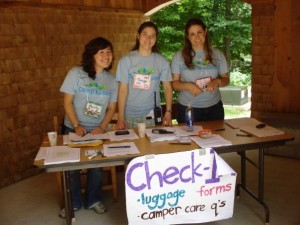 Camp Kesem provides a free, week-long summer camp for kids whose parents have or have had cancer. “Kesem” is the Hebrew word for magic; our goal at Camp Kesem is to provide these children with a magical week that allows them to escape the harsh realities of cancer.
Camp Kesem provides a free, week-long summer camp for kids whose parents have or have had cancer. “Kesem” is the Hebrew word for magic; our goal at Camp Kesem is to provide these children with a magical week that allows them to escape the harsh realities of cancer.
Campers participate in normal camp activities such as swimming, arts and crafts, and sports; what makes Camp Kesem special is that during these activities, campers realize they are surrounded by other children in the same situation. Through love, laughter, and support, Camp Kesem helps campers to share each other’s strength and realize that they are not alone.
The other half of the Camp Kesem mission is to empower student leaders. In the process of organizing Camp Kesem, college students serving as volunteer organizers and counselors gain hands-on experience in running a nonprofit out of their dormitory rooms. The students involved are all part of a tight-knit community and help out when other counselors have family crises, schoolwork difficulties, and more. Best of all, student volunteers who invest their time and energy into Camp Kesem are able to see a positive, tangible difference in the campers in just one week.
My understanding is that your desire to start a branch of Kesem at MIT was somewhat personal. Can you talk a little bit about the impact of cancer on your life?
When I was 13 years old, my paternal grandmother died of colon cancer; almost exactly one year later, my paternal grandfather died of prostate cancer. As a teenager, it was hard to make sense of so much loss in such a short period of time and to come to terms with the idea that Grandma and Grandpa wouldn’t be able to attend my tennis matches or high school graduation.
When I visited Duke during my junior year of high school and heard about their campus branch of Camp Kesem, I knew that I wanted to be involved with the program. It combined two things that mean a great deal to me: summer camp, which I had attended since the age of five, and families affected by cancer. Once I knew I wouldn’t be attending Duke, I called up Camp Kesem National and asked if it would be possible to start a campus branch at MIT. Luckily, Camp Kesem National said yes.
Creating an MIT-affiliated camp had to consist of some incredibly hard work. Did you raise the funds for the program? If so, can you explain the process you used?
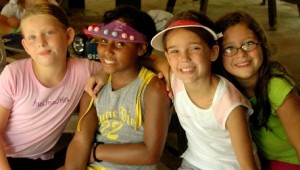 Fundraising has been, and probably always will be, the most difficult and time-consuming aspect of organizing Camp Kesem. Because of the financial burdens that cancer places on families, we offer it completely free of charge – which means that for Camp Kesem 2010, our target is to raise $55,000.
Fundraising has been, and probably always will be, the most difficult and time-consuming aspect of organizing Camp Kesem. Because of the financial burdens that cancer places on families, we offer it completely free of charge – which means that for Camp Kesem 2010, our target is to raise $55,000.
Our primary methods of fundraising are writing grants and soliciting personal donations; we also run mini-events throughout the year (e.g. bake sales, Valentine’s Day candy-grams, and care packages). In the past year, we’ve also added a few larger-scale events, such as an informational brunch called “Make the Magic” that combines student, camper, and parent perspectives on Camp Kesem’s impact. Corporate matching programs and community partnerships have supplemented our funds as well.
From 2007-2009, I served as the primary grant-writer for Camp Kesem and secured grants totaling over $30,000 from sources inside and outside of MIT. The fundraising coordinators and I also worked individually with each Camp Kesem coordinator and counselor to ensure that he or she reaches a personal fundraising goal of at least $400.
We try to be creative with our fundraising ideas: the most outrageous involved male counselors donning colorful bras and asking passersby to “stuff their cups” to raise money for camp. The trick was having other counselors there to explain that the weirdness was for a good cause, and that our male counselors aren’t afraid to humiliate themselves to help kids whose parents have cancer.
The saddest and sweetest source of funds comes from several of our camper and counselor families’ request that in lieu of flowers, well-wishers can make a donation in memory of loved ones who have died. The first time this happened was in October 2007, right after our first session in August. I was blown away that a family of three campers felt so strongly about Camp Kesem that in their darkest hour, they wanted to share our program with other families in need.
And you also were responsible for staffing the program? How did you go about recruiting others to work at the Camp?
Initially, recruiting students began with the people I knew: students in my dormitory, pre-orientation community service program, and freshman classes. After we had a small core group, we began to publicize the program to other undergraduates through e-mails, posters, and information sessions.
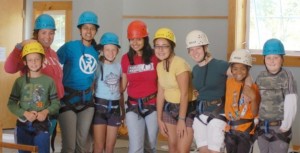 Being a Camp Kesem counselor is a fairly substantial time commitment. We require every counselor to attend 30 hours of training, split up over several Saturdays in April and one long day in August. Training consists of modules such as behavior management, grief and mourning, aquatic safety, and medical and emergency procedures. Additionally, every counselor is required to help us fundraise, serve on one planning committee, and attend camper reunions and publicity events. Yet in the past two years, we’ve seen applications skyrocket. For roughly available 25 spots, we received over 50 applications last year – and we’re expecting even more for the 2010 session. I think the number of applications is a reflection on the giving spirit of the MIT community, and how much the Camp Kesem experience gives back to the counselors.
Being a Camp Kesem counselor is a fairly substantial time commitment. We require every counselor to attend 30 hours of training, split up over several Saturdays in April and one long day in August. Training consists of modules such as behavior management, grief and mourning, aquatic safety, and medical and emergency procedures. Additionally, every counselor is required to help us fundraise, serve on one planning committee, and attend camper reunions and publicity events. Yet in the past two years, we’ve seen applications skyrocket. For roughly available 25 spots, we received over 50 applications last year – and we’re expecting even more for the 2010 session. I think the number of applications is a reflection on the giving spirit of the MIT community, and how much the Camp Kesem experience gives back to the counselors.
I would think that affiliation with other institutions in Massachusetts would also be critical for the program. Can you talk a little bit about your community partnerships with local hospitals and cancer centers?
Aside from fundraising, I think finding families who want to participate in the Camp Kesem program is the most difficult aspect of planning. This was especially true our first year, when we did not have families singing Camp Kesem’s praises like we do today. We couldn’t exactly walk up to parents and say, “Have you or your husband/wife/partner had cancer? If so, do you want to send your kids to a college student-run camp?” Instead, we had to be more subtle and work with local social work/patient advocacy programs and support groups; these social workers and program leaders served as our liaisons to families coping with cancer.
During the first year, Camp Kesem MIT had the luxury of being advised by two local graduate students who had been Camp Kesem counselors at Stanford and UC-San Diego, respectively. Our two advisors and I met with social workers and other clinicians to explain the program, the meticulous national standards that we abide by, and the compassion shown by student counselors. We were able to convince these clinicians and families of the benefits of Camp Kesem. Over the past three years, we have continued to build strong relationships with Dana Farber Cancer Institute, Massachusetts General Hospital, Beth Israel Deaconess Medical Center, and other hospitals and resource centers in terms of financial support and camper referrals.
Camp Kesem MIT was the only branch to earn a perfect internal rating of 100? What does that entail?
Internal ratings are based on the American Camping Association’s accreditation criteria, which is a combination of safety, staff training, and camp programming best practices. (For example, the list of standards includes proper aquatic safety and medication management.) We were proud to have earned a perfect rating because it meant that we prepared a program that was not only fun, exciting, and cancer-aware, but also completely safety- and health-conscious.
For your Rhodes Scholar essay you briefly told the story of one camper and the impact Camp Kesem had on him. Can you share with our readers his story so that they have an understanding as to how a program like Camp Kesem can impact children?
 For context, the Camp Kesem Camper Care Committee requests that each parent fill out an application and questionnaire about their children that helps us better serve their family. One question asks about the campers’ knowledge of their parents’ cancer, including the effect that cancer has had on the children.
For context, the Camp Kesem Camper Care Committee requests that each parent fill out an application and questionnaire about their children that helps us better serve their family. One question asks about the campers’ knowledge of their parents’ cancer, including the effect that cancer has had on the children.
In one camper’s case, his mother wrote that he had low self-esteem since the time of her cancer diagnosis – another instance of the invisible markers that cancer leaves on the children of cancer patients. Sure enough, after his team lost a kickball game at the beginning of camp, the camper grew upset and told a counselor, “I never win in life.” At staff meeting every night, the subject of his self-esteem came up, and we resolved to try to boost his confidence if at all possible.
We had three such opportunities. With encouragement from the counselors and other campers, this camper was able to participate in all facets of the ropes course – no easy feat for a 9-year-old. Secondly, this camper had never been canoeing before and was a bit afraid of the lake. But he joined another camper and me for his first canoeing trip. He’d say, “I’m a little scared,” and I’d respond, “Do you want to turn around?” He’d then say, “No, just a little bit farther.” By the end of our canoeing session, we’d been as far out as the lifeguards allowed. The final opportunity came when we were deciding on our annual camper awards; we gave him the “Most Adventurous” award. That night, his counselors said that he kept flicking on his flashlight to look at the award just one more time, all the while with a huge smile on his face.
When it came time for parents to pick up their children, this camper’s dad saw him interacting with other campers and counselors and began crying a little. “He’s a completely different person now,” he said through his tears.
As touching as this camper’s story is, one of the remarkable things about Camp Kesem is that every one of our campers has an amazing story. The resilience that our campers have is astounding, and we are fortunate to facilitate their growth through the Camp Kesem experience.
Now you serve as the National Student Advisory Board Co-Chair for the organization?
The National Student Advisory Board (NSAB) serves as the liaison between Camp Kesem student leaders and the Board of Directors, who handle bigger-picture decisions such as our fiscal responsibility agreements and national branding. The other NSAB members and I are trying to eliminate the divide between student leaders and the Board by providing two-way communication. We want to explain to students how the Board makes decisions, and at the same time ensure that the Board understands the student perspective on national policies and campus priorities.
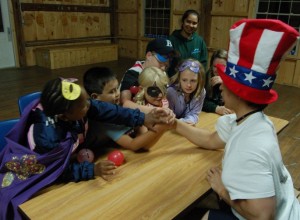 One of my main responsibilities of being an NSAB Co-Chair is leading conference calls with the regional and national advisory boards, and participating in the Board’s bimonthly conference call. The conference calls are a great way for campuses to gain fresh ideas for fundraisers, theme days at camp, sustainability practices, and more. Beyond the calls, my co-chair and I are in the process of setting up more information-sharing projects such as a campus buddy system and a wiki.
One of my main responsibilities of being an NSAB Co-Chair is leading conference calls with the regional and national advisory boards, and participating in the Board’s bimonthly conference call. The conference calls are a great way for campuses to gain fresh ideas for fundraisers, theme days at camp, sustainability practices, and more. Beyond the calls, my co-chair and I are in the process of setting up more information-sharing projects such as a campus buddy system and a wiki.
During your time at MIT you have also served as an ‘issues intern’ in Senator Edward Kennedy/Senator Paul Kirk’s Office. Can you explain what an issues intern does? What have you learned from this work that you would not have learned otherwise while in school?
An issues intern handles constituents’ questions and concerns about legislation. On any given day, I might help a social worker address insurance problems with a regional Medicare office or educate constituents about educational loan legislation. Though people say government is inefficient and ineffective, I found Senator Kennedy’s district office was just the opposite: we returned every phone call and answered all letters sent to our office.
As a result of working in the Boston office, I became much better informed about politics and especially legislation relevant to my issue areas: arts, disability, education, environment, Social Security, and women’s issues. Similar to my work with Camp Kesem and the NSAB, much of my work was about connecting constituents with resources and information, which I found satisfying. I also had a chance to practice responding politely to constituents who disliked health care legislation, such as the woman who said our office should keep our hands off her Medicare. Those experiences, coupled with years of living with an older brother who good-naturedly teased me, definitely helped prepare me to deal calmly with the intensity of Rhodes interview.
I am intrigued by one of your activities at MIT – my understanding is that you are a founding member of the imperfect@MIT club? Can you explain the purpose of this organization and your rationale for creating such a club?
The idea for imperfect@MIT came from a Duke study that found undergraduates felt pressure to be effortlessly smart, accomplished, attractive, athletic, and popular. The study described this phenomenon as “the myth of effortless perfection.” This myth manifests a little differently at MIT, in that some students brag about taking the most classes and having the most work, and consider sleep deprivation a badge of honor. This lifestyle puts students at risk of burnout, especially when they are accustomed to standing out the same way they did in high school: succeeding on intelligence alone, putting minimal work into classes, concentrating on a smorgasbord of activities, and somehow achieving enviable results. I have definitely had days when I felt that the work I was doing was not getting me anywhere, but the imperfect@MIT message reminds me that it is perfectly natural to struggle sometimes – and that sometimes struggles sweeten the subsequent rewards.
 imperfect@MIT is still a project under construction. While it can be hard to have students buy into the idea that their best is good enough, we think it’s an idea worth communicating. I and the other students involved will continue to work toward dispelling the myth of effortless perfection and encourage students to have a healthy attitude toward success.
imperfect@MIT is still a project under construction. While it can be hard to have students buy into the idea that their best is good enough, we think it’s an idea worth communicating. I and the other students involved will continue to work toward dispelling the myth of effortless perfection and encourage students to have a healthy attitude toward success.
Can you talk a little bit about the Rhodes Scholar application process?
The Rhodes Scholarship application process is, in a word, intense. The written application consists of an institutional endorsement, five to eight recommendation letters, two-page curriculum vitae, transcript, and 1,000-word essay detailing your most meaningful college experiences and how they relate to your proposed field of study. About a month later, each District Committee notifies a small group of applicants that they have been invited to the Friday night cocktail party and Saturday interview.
The cocktail party is an informal way to familiarize you with the other applicants and the Committee members, engage in some interesting conversations, and eat some tasty desserts. The Saturday morning interview is more grueling: you sit at the head of a table in the library with seven Committee members for about 20 minutes, and they probe your knowledge about anything from current legislation to coursework you completed a year ago. Thanks to advice and preparation from MIT’s Fellowships Office, the 20 minutes flew by before I knew it. After that, I went back to my hotel to check out of my room, ate lunch in Haverford’s dining hall, and returned to wait with the other applicants while the Committee deliberated. Around 4 p.m., the Committee called us back into the library to announce their selections.
Interestingly, receiving a Rhodes Scholarship does not automatically earn you admission to Oxford. Over winter break, I submitted my formal application (primarily my research proposal and two 2,000-word essays) and chose which college I wanted to live in. I am glad that’s the last application I’ll have to fill out for a while!
So what opportunities will the scholarship offer you that you might not have had the opportunity to pursue otherwise?
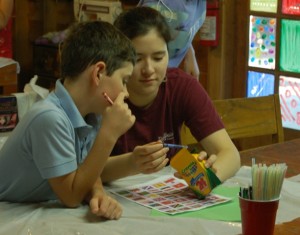 I am interested in careers involving health policy or psychology. My doctoral work at Oxford will examine the ethical and policy implications of the BRCA1/BRCA2 gene mutations; mutations to these genes are linked to increased risk of breast, ovarian, and prostate cancers. My project will investigate how clinicians help patients make appropriate individualized decisions about BRCA1/BRCA2 genetic testing, as well as looking at the support mechanisms in place for people who have had or are considering genetic testing.
I am interested in careers involving health policy or psychology. My doctoral work at Oxford will examine the ethical and policy implications of the BRCA1/BRCA2 gene mutations; mutations to these genes are linked to increased risk of breast, ovarian, and prostate cancers. My project will investigate how clinicians help patients make appropriate individualized decisions about BRCA1/BRCA2 genetic testing, as well as looking at the support mechanisms in place for people who have had or are considering genetic testing.
This research will expose me to both an understanding of ethics and communication in health care and the psychological effects of illness on decision-making. The best opportunity provided by the Scholarship is the funding that will enable me to conduct doctoral research with two great professors, Michael Parker of Oxford’s Ethox Centre and Anneke Lucassen of the University of Southampton.
Also, as someone who has never been abroad except for a short trip to Mexico, I am looking forward to traveling around Europe and gaining a firsthand perspective of European health care and political systems. In three years, I hope to leave Oxford with a better sense of whether to pursue a career as a health policy professor and researcher or a clinical psychologist.
I cannot think of any greater honor for a college student than to receive this prestigious award. Can you talk a little bit about how you felt when you learned you had been selected.
Unlike other scholarships that notify applicants of their status by e-mail or phone, each Rhodes District Committee gathers the interviewees in one room, congratulates all applicants for being strong candidates, and then reads out two names in alphabetic order. The people whose names are read out are the Rhodes Scholars-elect.
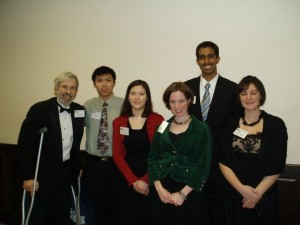 My name was called first, and I felt honored and humbled to be selected from a pool of such talented candidates. After that, everything just felt surreal – I went from writing for the campus newspaper, The Tech, to being mentioned in a front-page article alongside MIT’s other two winners, Ugwechi Amadi and Steven Mo. Most of all, I am grateful for the kind words and support from my family, friends, and the MIT community.
My name was called first, and I felt honored and humbled to be selected from a pool of such talented candidates. After that, everything just felt surreal – I went from writing for the campus newspaper, The Tech, to being mentioned in a front-page article alongside MIT’s other two winners, Ugwechi Amadi and Steven Mo. Most of all, I am grateful for the kind words and support from my family, friends, and the MIT community.
Photos courtesy of Camp Kesem MIT and Caroline Huang.
When it comes to higher education, there are two critical decisions to be made.
First, but not necessarily foremost, there is the choice of a specific school. A couple of weeks ago we took a look at the warning signs that you may have chosen the wrong school.
 Just as important as to the decision of where to attend college there is the choice of major. In fact, in a good many cases, the choice as to area of study ripples into the selection of a school leading some to actually choose their school based a desired major.
Just as important as to the decision of where to attend college there is the choice of major. In fact, in a good many cases, the choice as to area of study ripples into the selection of a school leading some to actually choose their school based a desired major.
Yetstories abound of students changing their majors twice, three times and more. These are not tales – data indicates that approximately 70% of college students will change their college major at least once.
Perhaps you are someone who has begun considering such a change.
But you have heard that each time you change your major you may well move from a 4- to a 4.5- or even 5-year plan. That also is a statement based in fact. But your choice of major is something you really need to get right.
Here are five warning signs that you may have made the wrong choice initially.
Boring Classes
There is a saying:
A job is the place where I have to go to work to earn money. A career, however, offers the chance to follow my chosen pursuits and even get paid to do so.
When the day comes, on Monday mornings you will want to be feeling positive about the work-week ahead. While in school, the same situation applies: you should be looking forward to the classes that relate to your major field of study.
If instead you are finding your core major courses a pain, that they are flat out boring or uninteresting, then you have made a poor choice. If you are finding that you have little interest in the courses you are taking, there is little chance you will be excited about working in a profession related to that major.
Poor Grades
Most college students struggle with certain courses. After all, some classes are more difficult than others.
But most students earn their highest grades in the courses related to their choice of major.
 One sign you have made the wrong choice of major is that you are struggling to handle the demands of the core courses that set the foundation for your field of study. The basic question is simple: Are your grades for the core courses in your major lower than your grades in your other required classes?
One sign you have made the wrong choice of major is that you are struggling to handle the demands of the core courses that set the foundation for your field of study. The basic question is simple: Are your grades for the core courses in your major lower than your grades in your other required classes?
If so, then you have made the wrong choice. A final transcript with poor grades in your major field of study is a red flag for employers – they will assume you are not likely to be able to bring the necessary skills to the job.
Not at All What You Thought
Now that you are in school and working on your field of study, you have a full sense as to what your major encompasses. Has that clarity reinforced or strengthened your original decision?
If you are having second thoughts, it could be that you chose your major for the wrong reasons. You may have been enticed by a hot career field or the earning potential of another option. Worse yet, you might have matched the popular choice of high school peers.
Now that you are actually involved in the coursework, is your major and area of study all you thought it would be? Is this a field that you can see yourself working in 40-hours a week, 52-weeks a year.
If not, you may have chosen the wrong major.
New Interests
Did you take an elective that brought you enormous excitement, a course where the work actually seemed enjoyable. A course where class time zipped by on a daily basis? A course that you truly hated to see come to an end?
Ultimately, the key question to ask is whether you were most content when studying the coursework in your major or did you find another area of study more appealing?
It is important that students differentiate between the course of study and the professor. It is the subject matter that we are talking about here, not how the material is presented or the ability of the professor to turn otherwise stale material into something palatable.
The bottom line is your major should be something you are excited about studying.
Changing Majors
 If your sentiment matches any of the four mentioned above you would do well to review your choice. But before making the decision to change your major, be sure to think things through.
If your sentiment matches any of the four mentioned above you would do well to review your choice. But before making the decision to change your major, be sure to think things through.
First, take advantage of the services available to you on campus. Set up some time to discuss the idea further with the appropriate on-campus staff.
Begin by finding some time to connect with academic department personnel related to your initial choice as to a course of study. Then, take the time to meet with academic department personnel representing your potential new area of study.
Second, after those two discussions, take the time to seek out a counselor in the career center. Talking with a person that is independent of the two areas of study and processing your concerns with that professional can be a real help.
Most importantly, if you are not happy with your choice of major but have not yet been drawn to another field, these counselors can help provide some career assessment options. Perhaps through them you can begin pursuing some new and more interesting courses.
They can also help you walk through the ramifications of making a change. That may include any added expenses as well as whether or not the change will require the postponement of your original graduation date.
How College Sports Continues to Sell its Soul.
I cannot remember the first time I heard someone suggest Division I athletics bordered on a form of prostitution. Though previously I had deemed such a suggestion excessive hyperbole, this past weekend we became witness to why that ugly word is used to describe college athletics.
On Saturday, Delaware State, a small 1-AA FCS football program, had the unenviable task of traveling up to Ann Arbor to take on the 1-A FBS Michigan Wolverines. As expected, the game, which should never have been played, was a rout of monumental proportions.
 The Wolverines (5-2) set several team records including 442 total yards of offense in the first half and 727 for the game in a 63-6 rout. Michigan matched a school record by scoring 28-points in the first quarter and their 49 points by halftime were the second-highest in school history.
The Wolverines (5-2) set several team records including 442 total yards of offense in the first half and 727 for the game in a 63-6 rout. Michigan matched a school record by scoring 28-points in the first quarter and their 49 points by halftime were the second-highest in school history.
But truth be told, such routs happen quite often in the world of college athletics, particularly in football when teams with disparate resources get together to ‘compete’ on the field. Therefore, in most instances, the Michigan-Delaware State game would simply be relegated to the NCAA hinterlands if not for a back story that demonstrates the sometimes vile world of college athletics.
Two Losses the Same Day
Sports sites noted that Delaware State actually lost two football games on Saturday. In addition to the pasting they received at the hands of Michigan, the team forfeited a game against fellow Mid-Eastern Athletic Conference foe North Carolina AT&T, a game that had been scheduled prior to the agreement to play Michigan.
In fairness, the initial mistake of two games being scheduled on the same date came while Delaware State was searching for an athletic director. But the choice of what game to play, and subsequently which to forfeit, demonstrates why so many are down on the world of college athletics.
Seems that Delaware State was offered $550,000 to go to Ann Arbor and play the role of football fodder for the Wolverines. And administration at the school decided that sum of money was just too much to pass up.
The Decision
According to reports, given the opportunity, Delaware State signed a contract to play the game in Ann Arbor despite having already committed to playing AT&T on the same date. The contract did allow Delaware State to cancel for a fee, the amount of which was not made public.
 Of course, once everyone realized a mistake had been made, Michigan could have done a classy thing and released Delaware State from the contract. But then again, if Michigan could afford to pay Delaware State $550,000 just to appear, one can gather that the lost revenue from a home game would represent a sum of money that made the half-million payout seem inconsequential..
Of course, once everyone realized a mistake had been made, Michigan could have done a classy thing and released Delaware State from the contract. But then again, if Michigan could afford to pay Delaware State $550,000 just to appear, one can gather that the lost revenue from a home game would represent a sum of money that made the half-million payout seem inconsequential..
At the same time, Delaware State officials could have done the right thing and honored their league commitment against AT&T. Of course, given Michigan’s stance, to do so meant State would have had to pay the required fee for backing out.
Instead of either school honoring the spirit of amateur athletics, i.e. handle a loss with dignity and class, both opted for the opposite. Both put large sums of money in front of integrity and, as a result provided a sorry message to the athletes on their respective teams.
Many Fumbled the Ball
Beyond the physical mismatch that constituted the so-called ‘game’, the decision by Delaware State to take the money also meant it put the integrity of its league at risk. The choice to forfeit could well impact the final league standings and ultimately, the status of numerous other conference teams in the process.
Given that both levels of football have a supervisory agency, the NCAA, one would think that leadership beyond the two schools would have taken issue with the decision to allow money to alter the integrity of the sport. Apparently, not so.
Today we understand why some would use the word prostitution to describe college athletics. Yes, such a statement borders on the outrageous.
But what these two universities did in the name of college football could only be described in such terms.